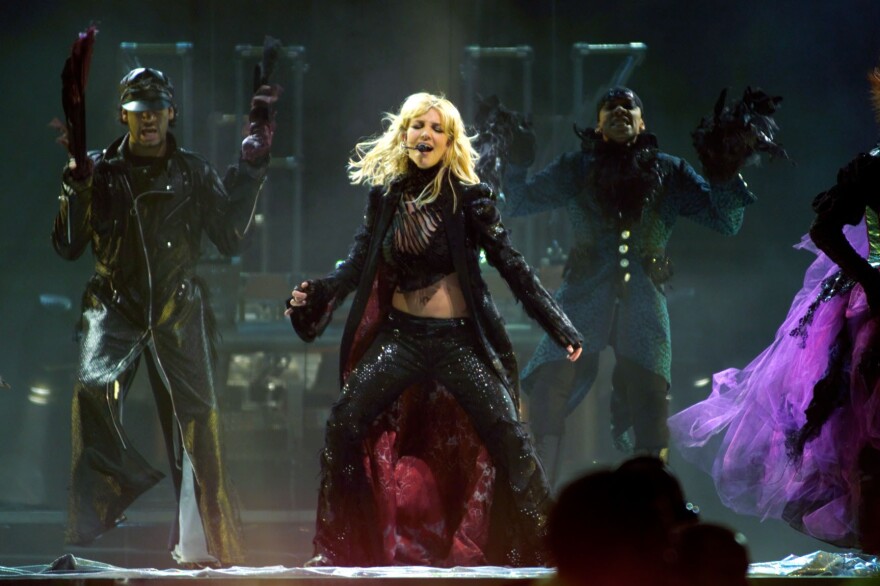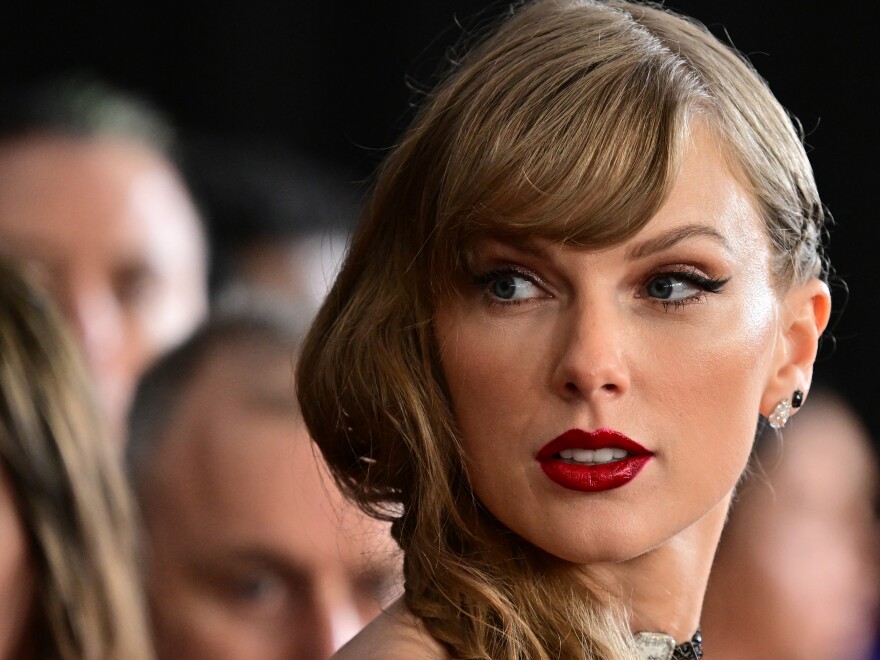Twenty years ago this month, a wardrobe malfunction in the Super Bowl halftime show caused a global meltdown.
If you were alive in 2004, you probably remember Justin Timberlake reaching across Janet Jackson's chest, pulling off one of the cups of her top and exposing her breast to millions of viewers.
The incident and the furor that followed became known as Nipplegate. Jackson took almost all the blame for what happened that night and the moral outrage that followed.
Nipplegate is one of several moments, and Jackson is one of several famous women, that author Sarah Ditum takes a critical look at in her new book, Toxic: Women, Fame, and the Tabloid 2000s.
It's a reassessment of a time when popular culture policed, ridiculed and even destroyed a variety of women in the public eye — women like Janet Jackson and Britney Spears.
Ditum spoke with All Things Considered host Scott Detrow about the unique moment in time and how society has reckoned with it since.
This interview has been lightly edited for length and clarity.
Interview highlights
Scott Detrow: You focus on celebrity pop culture of the aughts, with a little bit of the late '90s and early teens thrown in as well, through the lens of nine different women. And you call this period of time the Upskirt Decade. Why did you do that?
Sarah Ditum: Because I think of the upskirt tabloid photo as — and this is a deservedly harsh judgment on that period — but as the kind of signature cultural product of that era.
It's something that couldn't really exist before, because in order to have a market in upskirt pictures, you have to have the kind of camera technology that paparazzi were able to use, which is small, light, point-and-click digital cameras which can take lots of images, where you can really get down in the gutter and point your camera directly up a woman's skirt to get that picture.
And you also have to have a voracious, no-holds-barred kind of gossip media which is willing to publish that material. And that was something that the internet made possible.
So you have to have those two things coming together. And at the same time, you have to have the absence of a legal framework that says this kind of material is intrusive and illegal and an invasion of privacy. And it was very shocking to revisit this period of time and realize how few guardrails there were, not just legally but also in terms of basic behavioral standards around what was and wasn't considered publishable.
Detrow: And then there's one thing you didn't mention there, but it's a big theme of your book, and it's the tone of the coverage. Because paparazzi would take these pictures, websites would publish them, and then the tone of the coverage would be, "There's Britney again, showing herself for all to see." You know, framing these women as villains, basically, for seeking fame and seeking our attention. And whatever problem they were facing at that moment was often framed as cosmic justice for them.

Ditum: Right. And the tenor of the commentary that went alongside these very intrusive pictures was very much, "They're doing it on purpose. They want to be looked at. ... They're the ones who are inflicting this on us."
Detrow: So a lot of the theme of this era was the rules of the internet being written in real time and people not fully understanding them until they were living in them. And toward the end of the book, you compare a lot of the women that it focuses on with Taylor Swift.
You point out she's only a few years younger than some of the people in this book, but by the time she becomes famous, the rules of the internet are written, and she knew what they were, and she knew how to operate in them. How much of a difference does that make for Taylor Swift?
Ditum: It makes an enormous difference. I think there are two kind of dividing lines that I would draw among the women in my book in terms of how things turned out for them. One of them is how young they were when they became famous. And I think becoming famous when you're a child is awful and difficult, whoever it happens to and in whatever era it happens.

The other one is where they were in relation to the internet. So, for example, Kim Kardashian, she is the same age pretty much as Paris Hilton. But when Kim starts to get famous, the internet has already been established. So she has a Myspace before she starts to get famous, the same as Taylor Swift actually had a Myspace early on, and that was part of the Taylor Swift story in the early part of her career, that she was a Myspace musician.
And I think you look at these figures who have the ability to shape their own presence on the internet and who have the ability to craft their fame, rather than have it crafted for them. And that's an incredible shift in power in celebrity. And you look now at the way top-tier celebrities operate, and they are able to control everything. They have a direct line to their fans via social media. They don't have to deal with reporters if they don't want to, if they aren't going to get favorable coverage.
Taylor Swift is never going to have to sit down and do the excruciating equivalent of Britney talking to Diane Sawyer about her sex life. That's unthinkable.
Detrow: You're thinking through ways that things didn't age that well at all. And I'm wondering if this has given you a different point of view on current events, current pop culture. Are there things that you're seeing play out and you're thinking, "This is probably not going to look good 10 or 20 years down the line?"
Ditum: Yeah, definitely. A lot of the misogyny I write about that was endemic in mainstream media, you don't see that in "reputable" outlets anymore, but you do still find it online in social media.
So if, for example, any listeners followed Megan Thee Stallion's testimony in the trial of Tory Lanez for shooting her in the foot, the mainstream coverage of that was correctly very sympathetic to her as a victim of violence. A lot of the social media reaction, though, was extremely hostile to her.
You still have a massive problem with revenge porn. We don't have a celebrity sex-tape economy anymore, but we do have the issue of largely men nonconsensually sharing images, the intimate images of partners. And I think that's something that is probably going to look incredibly queasy in retrospect when it's realized how endemic that actually was as a problem.
Copyright 2024 NPR. To see more, visit https://www.npr.org.








